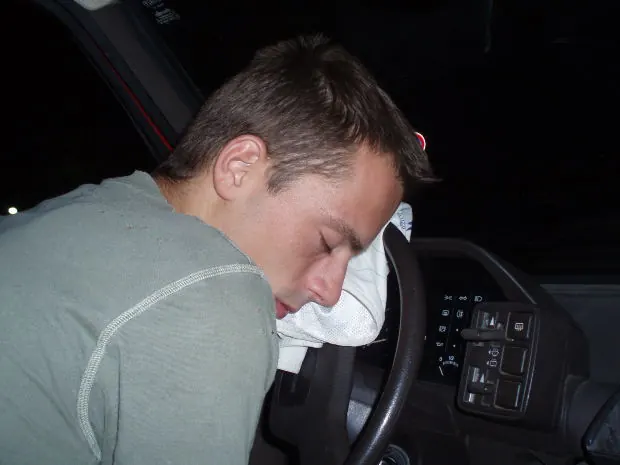Mandibular Fracture
It is not unusual for car accidents to cause facial fractures. A mandibular fracture is one of the most commonly sustained traumatic injuries during motor vehicle accidents.
What is the definition of a mandibular fracture?
A mandibular fracture is a serious injury to the jawbone. Specifically, it is a fracture in the mandible, or the lower bone of the jaw. Because the jawbone is partially circular in nature, most of these bone fractures will have breaks in more than one location in the jawbone. They are almost always the result of trauma. Patients will feel like their teeth are no longer aligned and almost always have bleeding from their gums.
What causes this fracture?
A mandibular fracture is almost always from a traumatic blow to the chin region. During a car accident, the car comes to a sudden stop if it strikes an object or vehicle in front. While the body is stopped by the seatbelt, the head is free to move. Patients will strike their chin on the steering wheel or dashboard. This can cause mandibular fractures and/or facial lacerations.
What treatment options are available?
These types of bone fractures range widely in location and severity. Multiple images are usually obtained first, using x-rays and CT scans, to identify every fracture in the mandible and elsewhere in the face. Then, the surgeon will usually wait for swelling to reduce prior to deciding on whether or not surgery is required. If the bones are approximated (or non-displaced), or if they can be approximated without surgery, then no surgery is required. If other structures are damaged or if the bones are unable to be approximated, then surgery is necessary to repair the mandible.
Multiple Complications can Develop
There are several complications that are common with a severe mandibular fracture. These include:
Infection: The mouth is home to many different types of bacteria. A fracture breaks the barrier between the soft tissue and the oral cavity. Bacteria can move into the soft tissue and cause a severe infection to develop.
Airway Compromise: The mandible keeps the tongue in place. If the mandible is broken on both sides, the attachments to the tongue could be damaged. The tongue could fall backwards and block the airway.
Tooth Damage: The mandible contains the roots of the teeth. If the roots are damaged, patients could lose teeth. Teeth also help to guide the approximation of the mandible to ensure it is placed in the proper location.
What other structures are at risk?
There are several structures that are at risk that could lead to further injury. Examples include:
- The carotid artery and jugular vein run just beneath the mandible. If these are damaged, the patient could lose a significant amount of blood
- The mental nerve provides sensation to the lower third of the face. This runs along the mandible and is commonly damaged.
- The inferior alveolar nerve also provides sensation to parts of the face. This also runs along the mandible and could be transected.
- The muscles of mastication could be damaged if the jaw is unhinged. These will also require repair.
What else is on the differential diagnosis?
While a mandibular fracture is relatively easy and unique to diagnose, there are other diagnoses in play.
- Tumors or cysts of the jaw
- Maxillary fracture
- Sphenoid fracture
- Upper vertebral fracture
These are all fractures that inhabit a similar location. It is possible the patient could have more than one fracture type.
What is the prognosis of this injury?
Most mandibular or jaw fractures are repaired with or without surgery. If muscles along the temporomandibular joint are damaged, the patient will need to learn how to chew again. Any nerve damage is permanent. Teeth may be eligible for replacement on a case by case basis. Most patients make a full recovery with regard to the jaw injury.
Why does a patient need surgery for a mandibular fracture?
If the mandible is broken in more than one place, the patient will require surgery to protect the airway and approximate the bones for appropriate healing. In addition, the patient may need surgery to ensure the teeth line up properly for eating. The patient will also need surgery because the jaw makes up a significant part of the appearance of the face. The jaw must be repaired for aesthetic reasons. If there is a single fracture that is non-displaced, the patient may not require surgery.
Related Articles by Edward Smith:
Sacramento Mandibular Fracture Injury Lawyers
Hello, I’m Ed Smith, a Sacramento Bone Fracture Attorney. If you or someone you care about has suffered a fractured jaw as a result of someone else’s negligence, please call me at (916) 921-6400 for free, friendly advice. You may prefer to contact me online or call me toll-free at (800) 404-5400.
I am a Million Dollar Advocate forum member. This is a group made up of the top rated trial lawyers in the country. Million Dollar Advocates have obtained multiple million dollar case settlements and verdicts on behalf of those they serve.
See my track record of success here: Past Verdicts and Settlements page.
Take a moment to look me up on these social media ranking sites: Yelp, Google and Avvo.
Image Attribution: Images in the public domain, via Wikimedia Commons
:dr/bw

